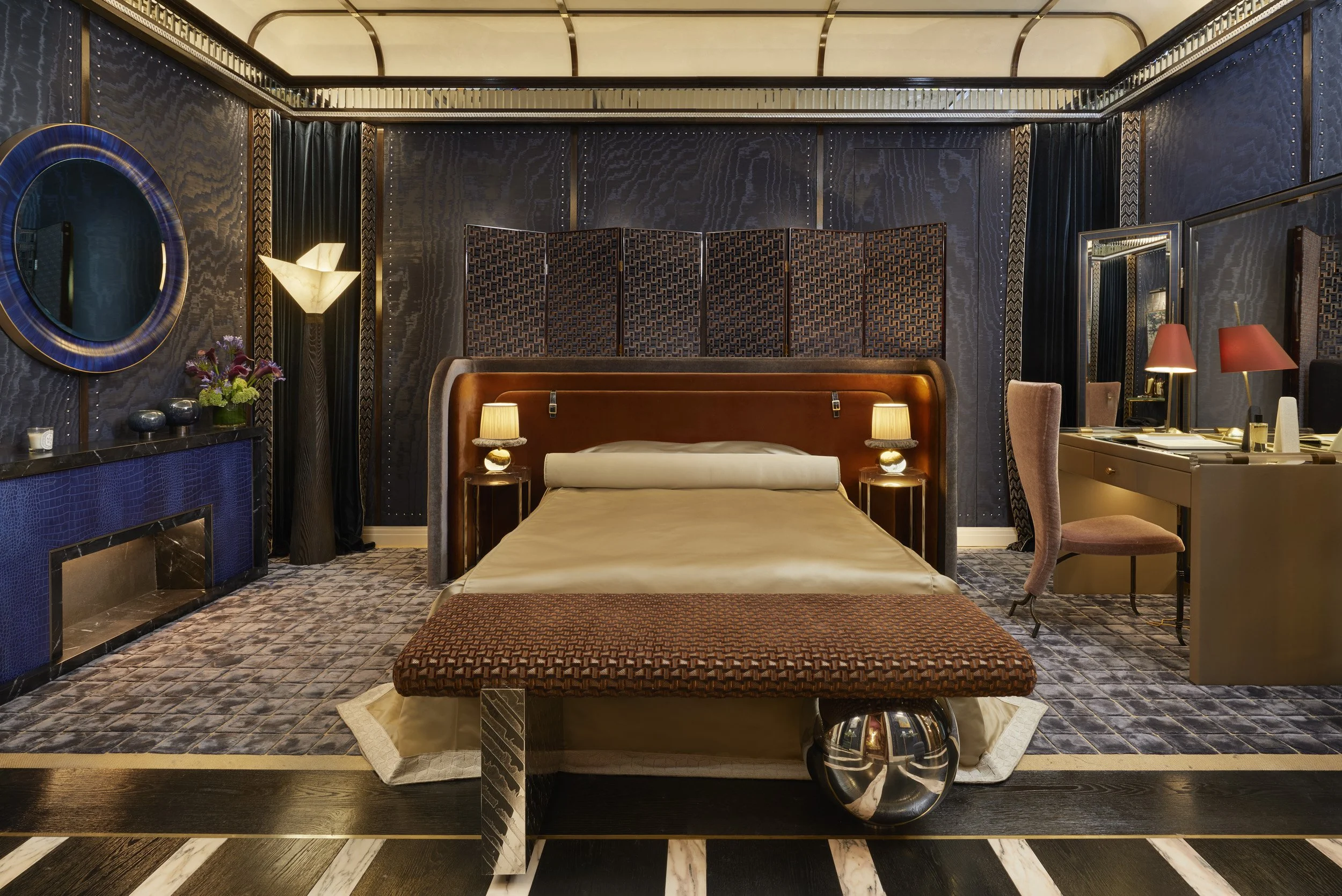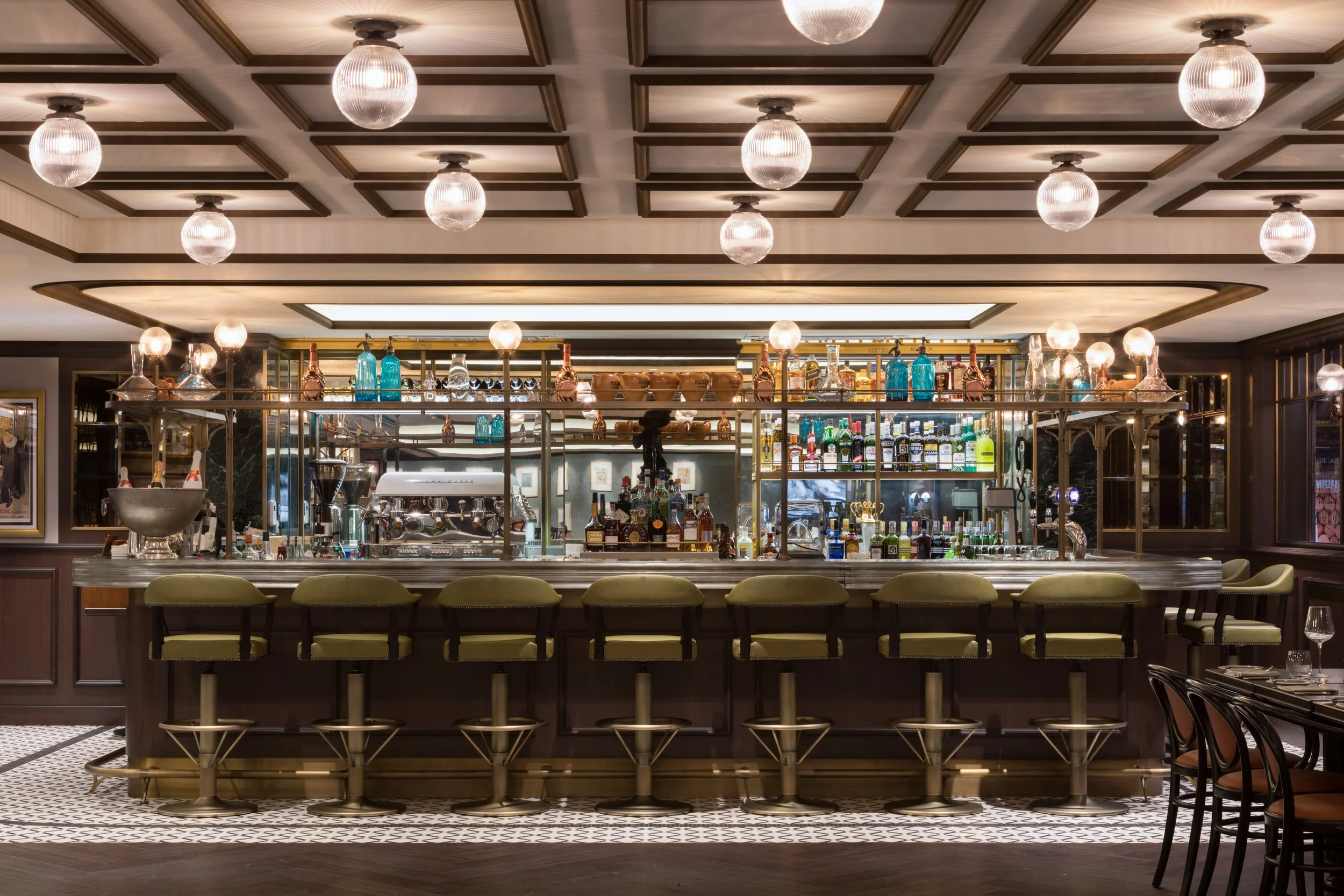Tolù Adẹ̀kọ́ Interview
Great design goes beyond aesthetics—it tells a story and creates lasting impressions. At Adekó & Co, an independent, multi-disciplinary studio, storytelling is at the heart of every project, blending quality, longevity, and a people-first approach.
In this digital exclusive full interview, we sit down with the creative mind behind the studio to explore their inspirations, design philosophy, and how they craft spaces that feel as meaningful as they are beautiful.
Photography: Adekó & Co studio by Darren Chung
What inspired you to pursue a career in interior design, and what was your first big design project?
Growing up in Ijebu Ode, Nigeria, I was immersed in a world of textiles, fashion, and craftsmanship. My father, a fashion designer and stylist, and my mother, an entrepreneur, nurtured my appreciation for creativity from an early age. I’ve always been fascinated with design and how it shapes the way we live. My first encounter with this fascination was changing rooms. I was captivated by how a room's transformation could completely change someone’s experience of a space. It sparked a deep curiosity in me to explore the possibilities of design.
Initially, I considered pursuing fine art, but I chose to study BA Interior Design at Bournemouth University because it still felt like an art form. I thought it would be like being a curator - combining and layering elements to create something cohesive and meaningful. A defining moment in my journey was being mentored by Sir Terence Conran, founder of the Design Museum and the Conran Shop, through a two-year furniture design program at school. That experience was transformative, deepening my understanding of the balance between function and aesthetics and shaping the way I approach design today.
My first major project was contributing to the design of Gordon Ramsay’s Maze Grill restaurant. While my role was small, it was incredibly rewarding to see an idea come to life. Being part of such a high-profile project so early on was a significant milestone in my career.
How has your design philosophy evolved since you started in the field?
Over the years, my philosophy has shifted from focusing solely on my personal design style to understanding the unique requirements of each space and its users. I prefer not to have a ‘house style' but rather a standard of quality in every project. A significant aspect of my approach is appreciating how individual pieces - furniture, lighting, and textures bring a space to life. These elements may seem insignificant, but they have a profound impact on how people interact with and experience a space.
I’ve also been deeply inspired by early 20th-century design, particularly from the 1920s to the 1940s. European and French designers of that era created furniture and interiors with timeless elegance, which I often reference in my work today.
Photography: WOW!house by Darren Chung
When starting a new project, what’s the first step you take to understand a client’s vision and lifestyle?
The first step for me is to really understand the space itself. I often begin with hand sketches mapping out the essence of the environment. Then, my team and I create vignettes, isometrics, or walkthroughs to refine our vision.
I pay close attention to natural light, flow, and architectural features. By analysing these details, I can identify what’s missing, what needs enhancement, and how to best align the design with the client’s vision. It’s about more than just aesthetics - it’s about crafting an environment that feels purposeful, seamless, and truly reflective of the people who will inhabit it.
Can you walk us through your creative process, from the initial concept to the final reveal?
My creative process always begins with narrative and storytelling. Once I understand the space, the next challenge is uncovering a unique story to guide the design.
Sometimes, these stories are hidden in history or the site itself, waiting to be rediscovered. Other times, they require deep research and imagination. We take a journalistic approach to understanding the project, starting with a broad perspective and narrowing it down to the finer details.
This research-driven method allows us to create multi-layered spaces, blending different visual references, periods, and styles. The result is a cohesive design that is rich in texture, architecture, and narrative depth.
What is your approach to balancing functionality with aesthetics in your designs?
My primary focus is ensuring that functionality and aesthetics coexist seamlessly. In most cases, they can complement each other, but if a compromise is necessary, functionality always takes priority. A space that doesn’t work for its intended purpose will ultimately need to be redesigned.
Once the functionality is addressed, I focus on creating moments of beauty and storytelling within the space. It could be a standout wall, a striking ceiling, or an area that invites people to dream. These focal points allow the narrative to shine while ensuring the space remains practical and usable.
Photography: MSC Grandiosa by Paul Craig
Where do you draw inspiration for your designs—architecture, travel, art, or something unexpected?
My inspiration comes from a blend of sources - historical architecture, design periods, gallery visits, and even unexpected moments in everyday life. Having worked in interior design for 17 years, each project has been a learning experience, shaping my understanding of the design journey and refining my approach.
Growing up in Nigeria and later moving to London in 1995 exposed me to a rich cultural contrast that continues to influence my work. Art plays a significant role in my design philosophy, and I frequently visit galleries and museums to explore new perspectives.
I often find inspiration in unexpected places - a vintage textile, a piece of historic furniture, or the ambience of a particular city. My goal is always to translate these inspirations into designs that feel both fresh and timeless.
Are there any designers, past or present, who have deeply influenced your work or mindset?
I had the privilege of being mentored by Sir Terence Conran, who fundamentally shaped my understanding of design as something both highly practical and deeply aesthetic. His approach has stayed with me throughout my career. Additionally, I’ve been greatly inspired by French designers such as Marc du Plantier, Paul Dupré-Lafon, Jean-Michel Frank, and André Sornay. Their books and archives have had a profound impact on my mindset, offering timeless insights into the art of design.
Photography: WOW!house by Darren Chung
What’s a design trend or concept you love right now and one you wish would disappear?
What I’m loving now is the bold embrace of colour in interior design. There’s something exciting about seeing designers move away from neutrals and explore how colour can transform a space. I truly believe there’s a perfect colour for every room, and when used thoughtfully, it can bring vibrancy and personality to a space.
As for trends I wish would disappear - the minimalist look for the sake of minimalism. While I appreciate a pared-back aesthetic when it’s intentional and tied to the functionality of the space, I dislike what I call “fake minimalism,” where spaces feel generic or stripped of personality just to follow a trend. Design should always be purposeful and reflect the unique story of the space and its users. Intentionality is key.
If you could design A dream space for yourself, what would it look like and why?
I wouldn’t say I have a single 'dream space' because, for me, every design project is a dream. I prefer designing with a narrative or story at its core rather than designing just for the sake of design. To me, that feels like vanity. It’s the same when people ask about my style - I don't have one, it just depends on the project. Each one brings its own unique journey, and my approach is always to craft a space that tells a meaningful story.
Finally, do you have any exciting projects that you are currently working on that you can share with us?
We’re currently working on a variety of exciting projects, including a range of high-profile luxury hotel designs and a historic residential development property in central London. Each project offers a unique opportunity to tell a different story, and our work spans both hospitality and luxury residential projects.




